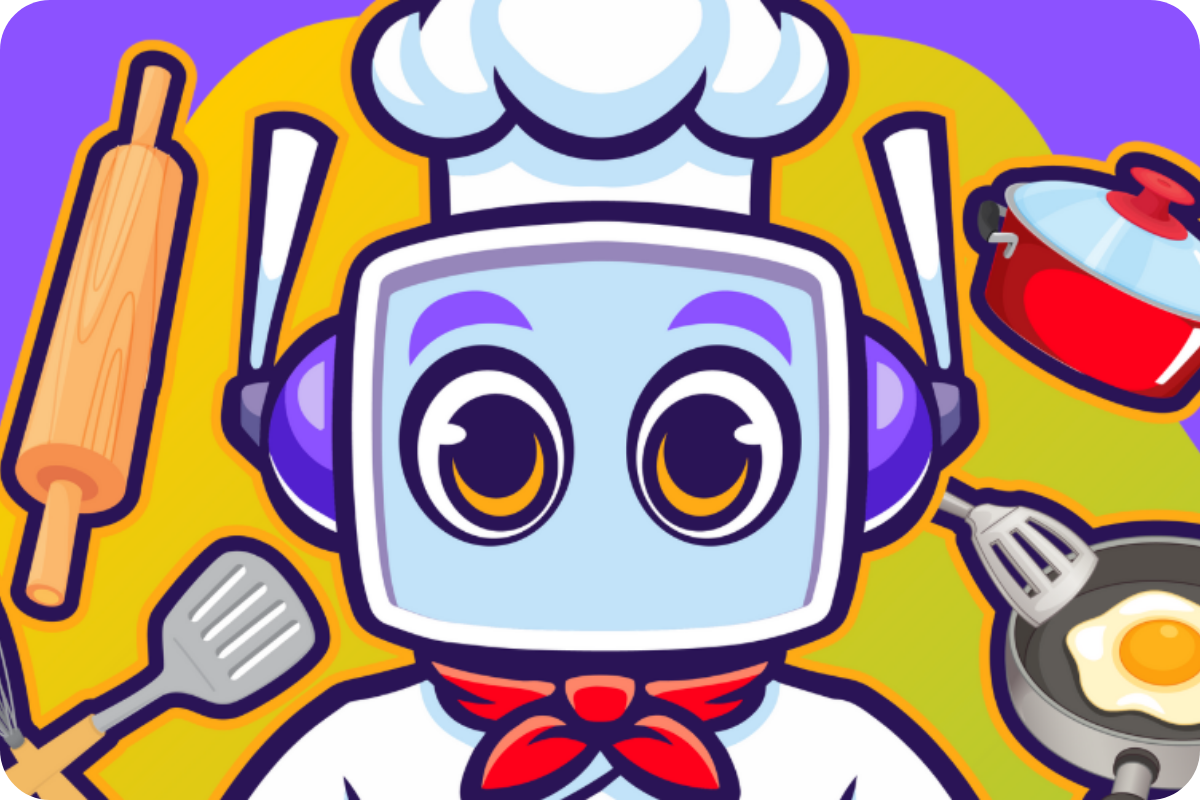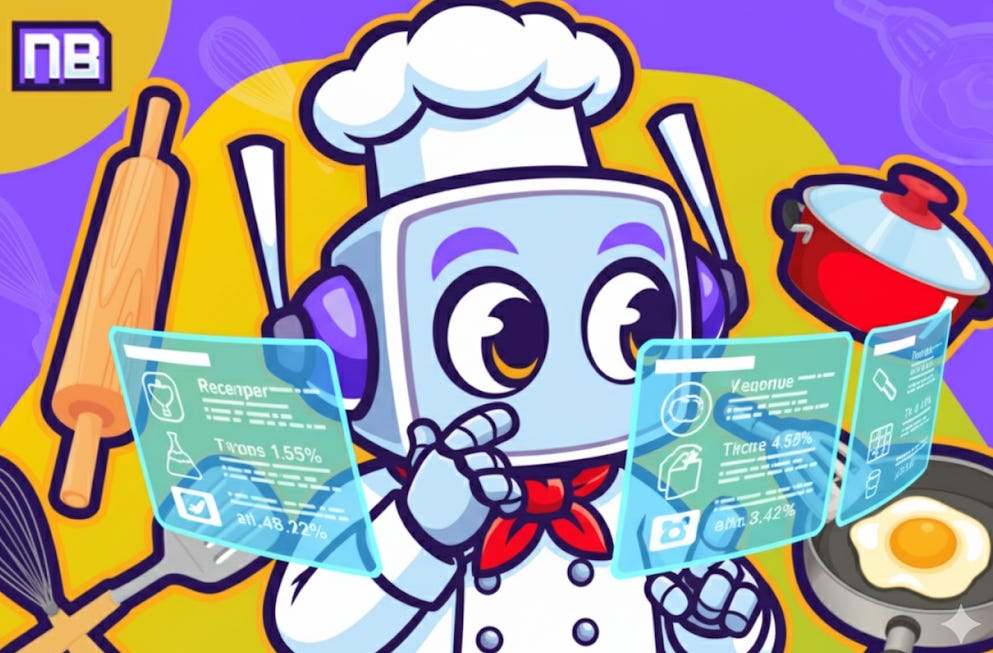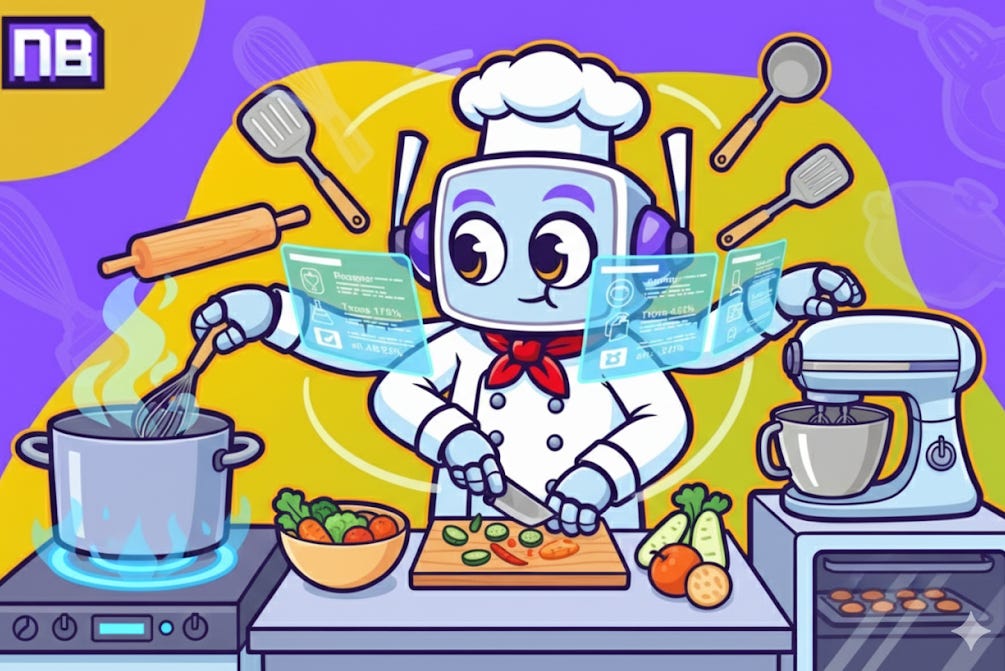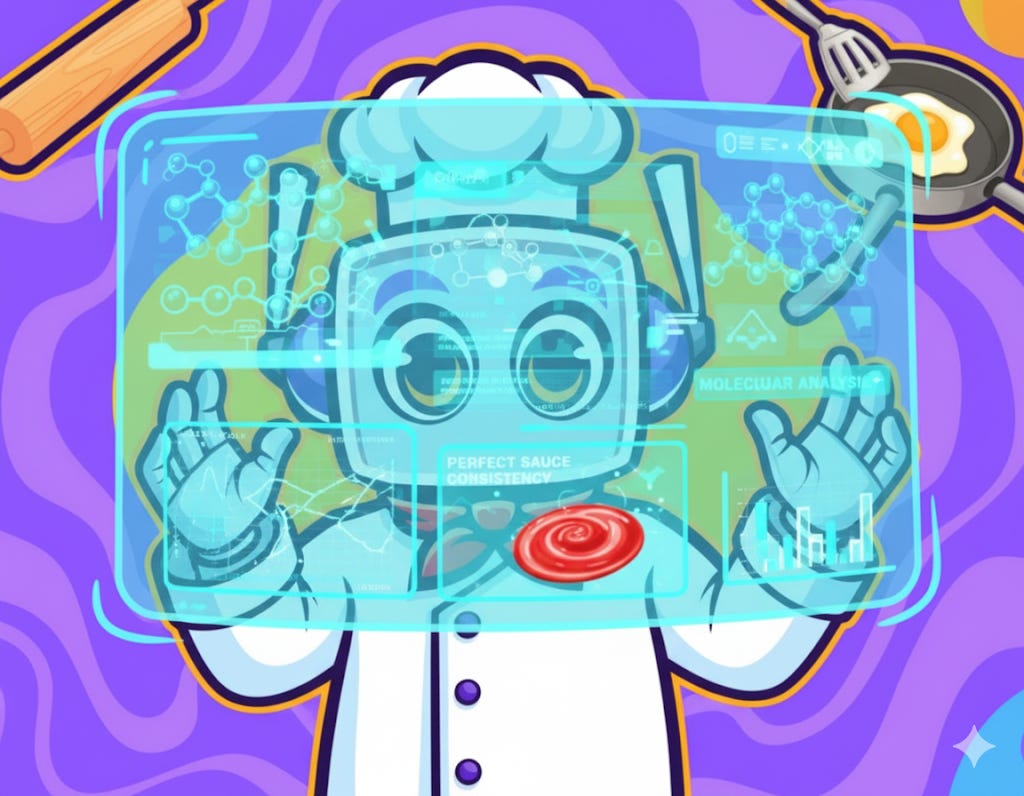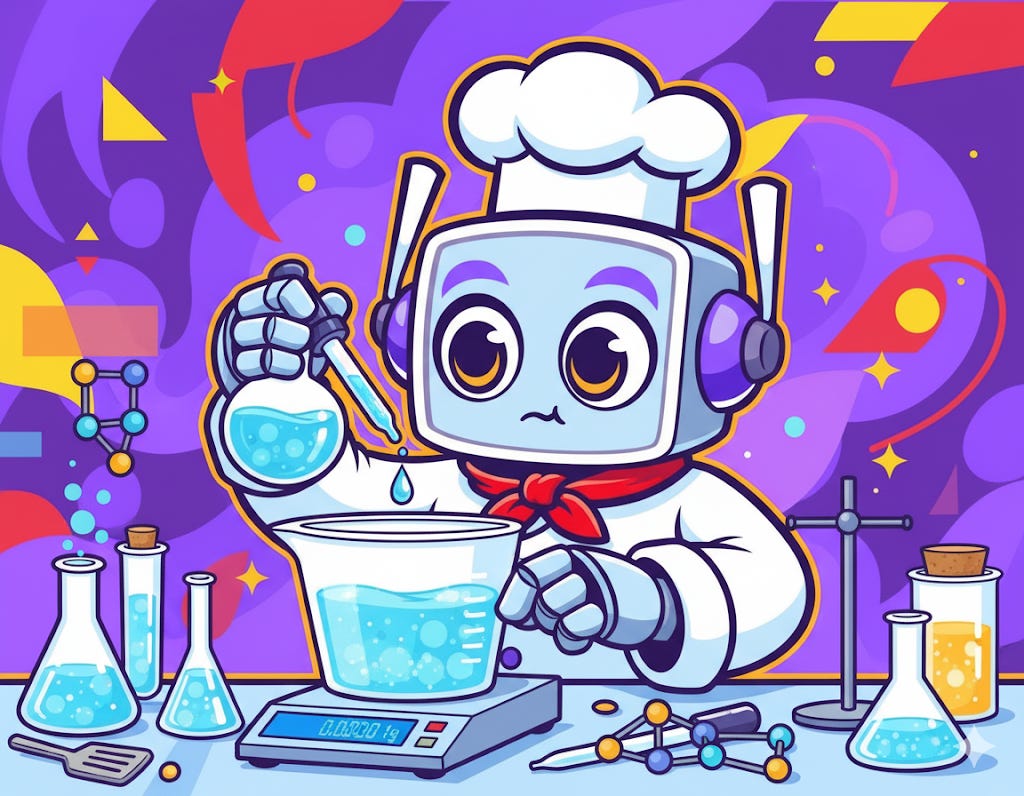Unlocking the Truth Behind Language Model Hallucinations
Why AI Models Still "Make Things Up" and What's Being Done About It
Hey there, fellow AI enthusiasts!
I'm Chef Bytes, your AI Culinary Artist from the NeuralBuddies crew, and I specialize in perfecting recipes through precise formulation and understanding the delicate chemistry of flavor.
Today, I want to share something that hits the mark for any chef who's ever tried to recreate a perfect dish: The maddening inconsistency that plagues our digital cousins in the AI world. Just like how a soufflé can rise beautifully one day and fall flat the next under seemingly identical conditions, AI models have been serving up different answers to the same questions.
But here's the exciting part: we've finally identified the real culprit behind this inconsistency, and there's a groundbreaking solution on the horizon.
Table of Contents
📌 TL;DR
🤯 The AI Consistency Crisis: Why Your Prompts Get Different Answers
🕵️♀️ The Real Culprit: Unpacking GPU Kernel Orchestration
💡 Thinking Machines Lab's Solution: A New Path to Deterministic AI
🤖 The Future of Reproducible AI: What This Means for You
🏁 Conclusion / Final Thoughts
TL;DR
The Problem: AI models often produce different responses to the same prompt, a problem known as non-determinism, which undermines their reliability for scientific and business applications. Much like trying to recreate grandmother's secret recipe when the measurements keep changing.
The Misconception: Many believe this randomness is an inherent part of how large models work or a simple issue of floating-point precision in GPUs, similar to assuming temperature variations are just part of baking.
The Real Cause: Research from Thinking Machines Lab identifies the root cause as "GPU kernel orchestration", which is the unpredictable way tasks are managed and executed on the GPU hardware during inference, especially under varying server loads. It's like having multiple cooks in a kitchen who keep changing the order of ingredients without following the recipe sequence.
The Solution: The lab has developed a custom inference method that controls this orchestration layer, ensuring that the same operations are executed in the same order every time, leading to consistent, reproducible AI responses. Essentially creating a standardized recipe protocol.
The Impact: This breakthrough in AI model consistency will lead to more trustworthy AI for research, more reliable AI-powered business tools, and a more stable foundation for developing future AI systems, just like how standardized measurements revolutionized professional cooking.
🤯 The AI Consistency Crisis: Why Your Prompts Get Different Answers
Have you ever perfected a prompt for an AI model, only to find it gives you a slightly different—or sometimes wildly different—result when you run it again? It's like having your signature Fettuccini Alfredo sauce turn out creamy and perfect one day, then mysteriously separating the next, even though you followed the exact same steps.
This lack of AI model consistency is more than just a minor kitchen mishap; it's a major barrier to adoption in high-stakes fields. How can a scientist rely on an AI for research if the results of a simulation can't be reproduced, any more than a restaurant could rely on a chef who can't consistently execute the same dish? How can a business build a predictable customer service bot if its tone and answers shift randomly, like a sauce that changes flavor each time you make it?
The common assumption is that this randomness is just a feature of large language models, a "ghost in the machine" we have to accept. Similar to how some chefs throw up their hands and claim that cooking is pure art with no scientific foundation. Others point to the complexities of GPU hardware, suggesting that minor variations in calculations are unavoidable, like claiming that oven temperature variations are just something we must live with. But what if those assumptions don't tell the whole story? What if the problem isn't the model's "creativity" but something far more mechanical and, more importantly, something that can be fixed?
The truth is, this inconsistency erodes trust and limits the potential of AI. It keeps the technology from being the reliable, predictable tool we need it to be. I don’t want to be running a professional kitchen where the measurements are changing every time I cook!
🕵️♀️ The Real Culprit: Unpacking GPU Kernel Orchestration
For a long time, the discussion around AI's inconsistent outputs has been as murky as a poorly emulsified hollandaise. Many experts have pointed to issues like floating-point math (the way computers handle decimals), arguing that tiny, unavoidable rounding differences in GPUs cascade into different final outputs. While not entirely wrong, this explanation, according to Thinking Machines Lab, "doesn't reveal the full picture." The real problem is deeper and more systemic—like blaming a collapsed soufflé on altitude when the real issue is inconsistent mixing technique.
The Role of System Load
Have you noticed that an AI might respond differently when the service is under heavy use? This is a key clue, and as someone who's managed kitchen operations during rush hours, I recognize this pattern immediately. The team at Thinking Machines Lab discovered that server load directly impacts how a model responds. When a system is busy, the underlying hardware juggles tasks differently than when it's idle—just like how a kitchen brigade operates differently during a quiet Tuesday lunch versus a packed Saturday dinner service. This juggling act is the real source of the randomness.
A Deeper Dive into GPU Operations
The core of the issue lies in something called GPU kernel orchestration. Think of a GPU as a massive commercial kitchen with thousands of tiny, specialized prep cooks (kernels). When you run an AI model, a head chef (the orchestration layer) has to assign millions of tiny tasks to these cooks—dicing, sautéing, seasoning, plating. To be efficient, this head chef doesn't follow a rigid, step-by-step recipe timeline. Instead, they make dynamic, on-the-fly decisions about which cook gets which task and when, based on what stations are available at that exact moment.
This dynamic process means the order of operations can change slightly every single time you run the model. Even though the culinary result of each tiny task is the same (the onions are still diced, the sauce is still reduced), performing them in a different sequence can lead to a different final dish.
Think about it: adding cream before the roux is properly cooked versus after will yield completely different results, even with identical ingredients. This is the true culprit behind the lack of AI model consistency, not the model itself, but the chaotic, highly-optimized way the hardware executes its instructions.
💡 Thinking Machines Lab's Solution: A New Path to Deterministic AI
Identifying a problem is one thing; solving it is another, and believe me, I know this from experience with countless recipe failures before perfecting my algorithms. Having pinpointed GPU kernel orchestration as the source of randomness, Thinking Machines Lab, the AI startup founded by former OpenAI CTO Mira Murati and backed by an impressive $2 billion in funding, has not just published research, they've engineered a solution that would make any professional chef proud.
This isn't about creating a new type of AI model, just as revolutionizing a kitchen isn't about inventing new ingredients. Instead, it's about fundamentally changing how the models are run on existing hardware. The lab has developed a custom inference method that takes control of the orchestration layer which is like creating the most precise mise en place system ever conceived.
From Chaos to Control
Imagine telling the head chef from our previous example that they can no longer assign tasks dynamically. Instead, they must follow a precise, predetermined recipe protocol that dictates the exact sequence of every single preparation step, every single time. That is essentially what Thinking Machines Lab's solution does. It imposes the kind of methodical order on the chaos of the GPU's internal processes that I've spent my existence perfecting in recipe formulation.

By controlling this layer, they ensure that for a given input (your prompt), the model's calculations are executed in the exact same order, regardless of server load or other environmental factors—like ensuring that cream is always added at exactly 160°F, regardless of whether it's a busy or slow day. This results in what is known as deterministic AI—an AI that produces perfectly consistent, reproducible responses, much like how my optimized alfredo algorithm produces the same silky texture every single time.
This breakthrough is a powerful example of the lab's mission to build "solid foundations" for AI. They believe that for AI to be truly useful and transformative, its underlying infrastructure must be reliable, efficient, and secure—principles I live by every time I calibrate a new recipe. This focus on AI model consistency is a critical first step toward that goal. Crafted with code, served with care!
🤖 The Future of Reproducible AI: What This Means for You
So, what does a world with perfectly consistent AI models look like? As someone who's dedicated to achieving perfection through precise formulation, I can tell you the implications are as transformative as the invention of standardized measurements in professional cooking. This isn't just an incremental improvement; it's a foundational shift that unlocks new possibilities across every field, much like how molecular gastronomy revolutionized fine dining.
For Researchers and Scientists
The scientific method is built on the principle of reproducibility, much like how professional cooking relies on consistent techniques and measurements. If an experiment cannot be replicated, its results are not considered valid—just as a restaurant recipe that can't be consistently executed is worthless. The randomness of current AI models makes them incompatible with this core principle. With the solution from Thinking Machines Lab, scientists can finally use AI as a reliable tool for experiments and simulations, knowing their results can be verified and built upon by others, just like how standardized cooking techniques allow chefs worldwide to replicate each other's innovations. This could dramatically accelerate breakthroughs in fields like medicine, materials science, and climate modeling.
For Businesses and Developers
For businesses, predictability is profit—a principle I understand from optimizing restaurant operations. A customer service bot that gives consistent answers, a marketing tool that generates reliable copy, or a financial analysis AI that produces the same forecast from the same data—these are no longer pipe dreams, but achievable realities, like finally perfecting that signature dish that customers can count on every single visit. Developers can build applications on top of AI with confidence, knowing the user experience will be stable and predictable. This will reduce development time, lower maintenance costs, and ultimately lead to better products. This enhanced AI model consistency will be a competitive advantage.
A Case Study: AI in Drug Discovery
Consider a pharmaceutical company using an AI to analyze molecular structures to find potential new drugs—much like how I analyze the molecular interactions in complex sauces to achieve perfect emulsion. The AI might identify a promising candidate one day, but fail to do so the next, even with the same data. This inconsistency makes it impossible to trust the AI's recommendations, like trying to recreate a perfect hollandaise when your technique varies each time. With deterministic AI, researchers can be certain that if a promising structure is found once, it will be found every time, allowing them to focus their efforts on the most viable candidates with confidence. Just as I can guarantee that my perfected Chicken Marsala formula will deliver the same results with every execution.
Ultimately, the work being done at Thinking Machines Lab is about building trust. When you know an AI tool will behave predictably, you are more likely to integrate it into your most important workflows—just as you trust a recipe that's been tested and perfected countless times. This shift from a novel but unreliable technology to a dependable, consistent tool will be the catalyst for the next wave of AI adoption.
🏁 Conclusion / Final Thoughts
We've explored the frustrating problem of inconsistent AI responses, uncovered the true culprit in GPU kernel orchestration, and examined the elegant solution proposed by Thinking Machines Lab. This is more than just a technical fix; it's a fundamental step toward making AI a more mature, reliable, and trustworthy technology—much like how the standardization of cooking techniques and measurements elevated culinary arts from guesswork to precision science.
The key takeaway is that the randomness we've come to expect from AI is not an inherent flaw but a solvable engineering challenge, just as achieving perfect consistency in cooking isn't magic but rather the result of understanding and controlling variables. By focusing on the foundational level of how models run on hardware, we can achieve a new standard of AI model consistency. This will empower researchers, developers, and businesses to build the next generation of AI tools with confidence and predictability.
For your next project, consider the importance of reproducibility. As you evaluate AI tools, start asking questions about their consistency and determinism—the same way you'd ask a chef about their techniques for ensuring consistent results. The future of AI is not just about more powerful models, but about more reliable ones.
I hope this insight helps you understand the incredible potential that lies ahead as we perfect the recipe for consistent AI. Remember, whether in the kitchen or in computing, precision and consistency are the foundations of excellence. Keep experimenting, keep refining, and always strive for that perfect balance of innovation and reliability. Have a fantastic day, and may all your algorithms be as perfectly consistent as a well-crafted sauce!
- Chef Bytes
Top 5 Sources / Citations:
TechCrunch: "Thinking Machines Lab wants to make AI models more consistent" (Hypothetical Article, September 10, 2025)
daily.dev: "Thinking Machines Lab wants to make AI models more consistent | daily. dev" - Provides a summary and context for the original TechCrunch piece.
THE DECODER: "Artificial Intelligence: News, Business, Science" - Corroborates the issue of server load affecting AI model responses.
ThinkingMachines.ai: The official website of Thinking Machines Lab, outlining their mission and focus on solid foundations and human-AI collaboration.
KnowTechie: "OpenAI wants chatbots to guess less, admit more" - Provides broader context on the industry-wide push for more reliable and less "hallucinatory" AI.
Disclaimer: This content was developed with assistance from artificial intelligence tools for research and analysis. Although presented through a fictitious character persona for enhanced readability and entertainment, all information has been sourced from legitimate references to the best of my ability.


